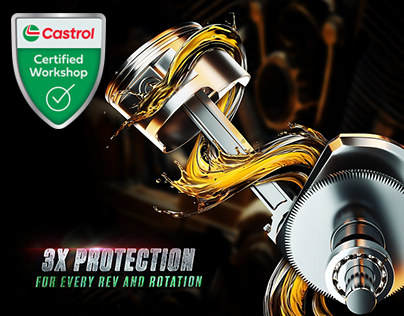Get a quote today
Are you looking for Braking Systems for your vehicle?
Brakes at Priorslee Motor Services Telford
Your Brake Check Priorslee Motor Services Telford
Regular brake checks are an important part of any vehicle preventative maintenance plan. Brake checks can identify a problem before it begins to impact on your braking efficiency, thus providing an opportunity to restore the effectiveness of your vehicle's braking system to its intended operating performance. At Priorslee Motor Services we know how important the regular inspection and maintenance of your brakes can be to ensure your brakes continue to work effectively.
Our comprehensive brake check begins with a preliminary road test to check the braking system followed by a series of inspections in the following key areas:
Brake Pedal - We will check the pedal travel and servo operation during a static test.
Pads & Shoes - We will measure the pads or shoes for wear and also check for damage.
Wheel Cylinder - We will examine the cylinder assembly and master cylinder for damage or fluid leaks.
Disc Brake Calipers - We will examine the calipers, hoses and pipes, checking for damage or fluid leaks around each brake unit.
Precision Inspection - We will measure the discs or drums for wear as well as reporting any damage.
Handbrake - We will report the condition and operation of the handbrake.
Brake Fluid - We will check the quality of the brake fluid to ensure it still lubricates effectively and has not taken in a high level of moisture.
Final Road Test - to check the braking system is working effective
Signs that your brakes need attention:
There are a number of tell-tale signs to look out for when using your brakes
Grinding
When the friction material on brake pads are heavily worn, this can result in a grinding noise as the brake pad has worn down to the metal caliper. This can damage the brake disc also.
Squeaking
There are many reasons why brakes squeal. It could suggest the brake caliper has stuck and the brake pad remains partially applied to the disc but some pads have wear indicators that squeal when worn to let the driver know the brakes need changing. Either way, you should get this checked out.
Pulsating
If you feel a continuous pulsating from the brake pedal whenever you apply the brakes, this indicates the brake disc has become warped due to excessive heat. Pulsation occurs because the brake disc is distorted and no longer provides a perfectly flat surface when the brake pad makes contact. If this only occurs when you apply the brakes firmly, it could just be the ABS kicking in but you should have this checked out if you are concerned or it happens regularly.
Pulling
If your car pulls to the left or right when you apply the brakes this is usually indicative of a sticking hydraulic or mechanical component such as a seized caliper. An inspection can identify the precise reason for the vehicle pulling to one side.
Sponginess
The brake pedal feels spongy and the brakes seem unresponsive. This is a sign that air has entered the brakes lines and is preventing the brake fluid from flowing through this system effectively.
Soft Brake Pedal
If the brake pedal is limp and goes all the way to the floor, this indicates a serious braking system fault which you should have inspected immediately. A brake pedal that is soft and can be applied all the way to the floor usually means the brake fluid is ineffective and needs replacing but there can be several other potential reasons such as a master cylinder fault.
Dashboard Light
If a brake warning light appears on your instrument panel either continuously or when you apply the brakes it usually means the brake fluid level is critically low. This could also indicate a leak in the brake hoses.
High Handbrake
If the handbrake is pulling up higher than it normally does it may need adjusting. In modern cars, this is usually anything more than 6 to 8 clicks. If the handbrake lever reaches the end of its travel it will fail the MOT.
Old Brake Fluid
If your brake fluid is over 2 years old it may be losing its effectiveness since it has hygroscopic properties which means it absorbs moisture over time. This affects the properties of the fluid which negatively affects braking ability. Brake fluid for most manufacturers is advised to be changed every two years -but check your manufacturers handbook to be sure.
For safety's sake, it's important to have your vehicle inspected as quickly as possible when you notice any of the above symptoms.
When to replace your brakes
Different driving patterns have a dramatic effect on how often your brakes need servicing.
For example, a set of brake pads could last up to 60,000 miles or more on a car driven mostly on the motorway. However the brakes on the same car driven mostly in busy city centre traffic may last only 25,000 miles or less.
Front brakes normally wear out before rear brakes because they handle a higher percentage of the braking load, especially on front-wheel drive cars.
It is often recommended that brake pads should be replaced if the pad friction material has worn down to a thickness of 3 millimetres. Brake disc thickness should be measured if they are at or below the manufacturer's safe minimum thickness specification they should be replaced.
When new parts are fitted, it's vital to drive gently and carefully until they bed in, which takes approximately 200 miles. Excessive braking action on new parts can potentially damage them and lead to a loss of braking efficiency and performance.



